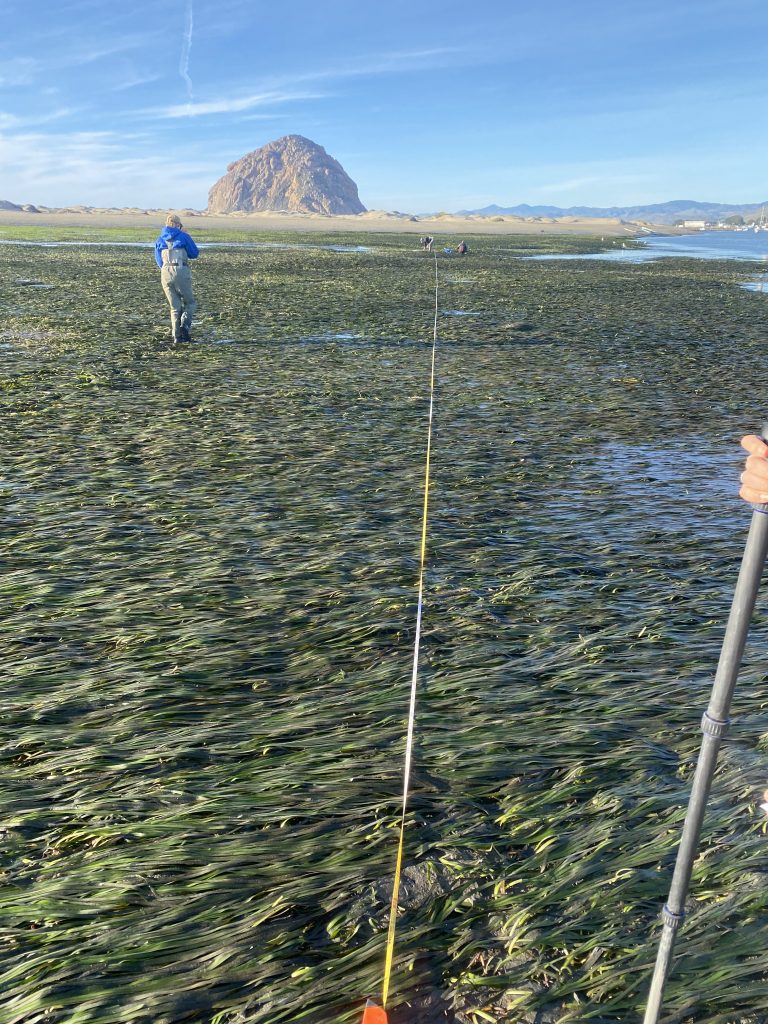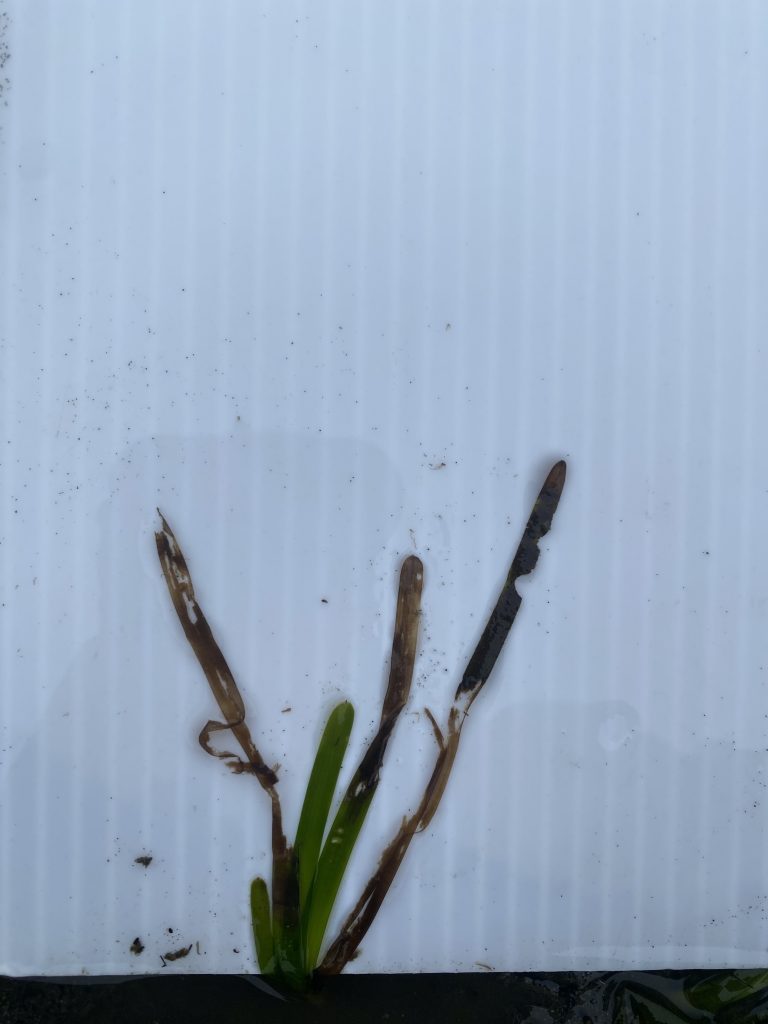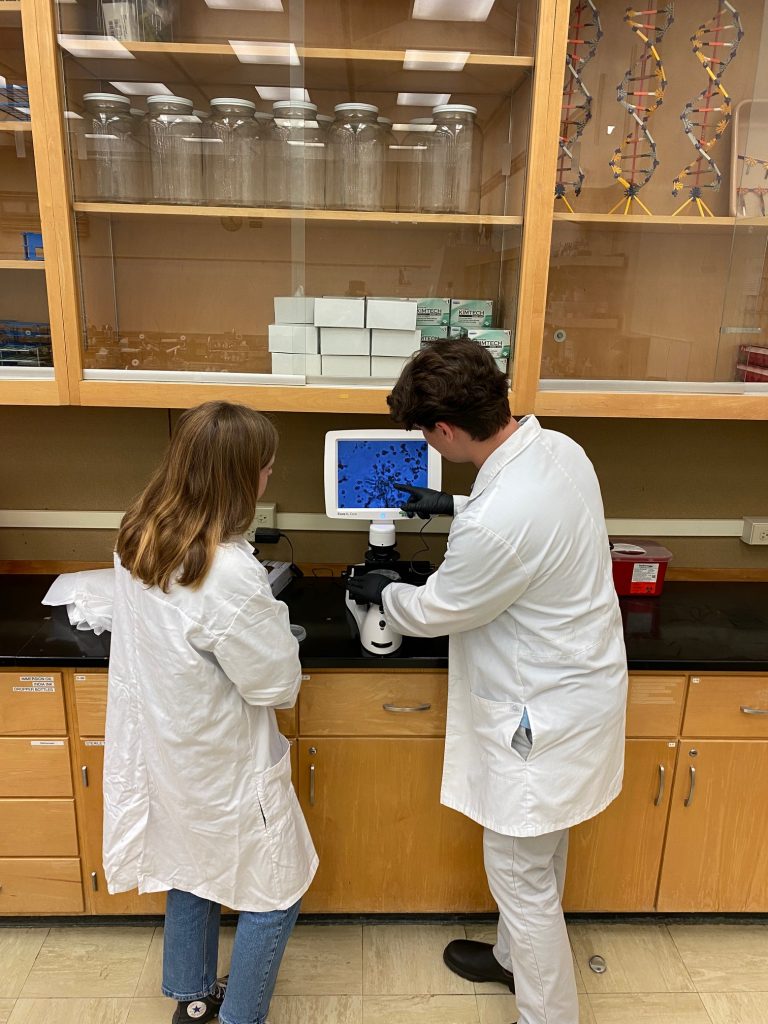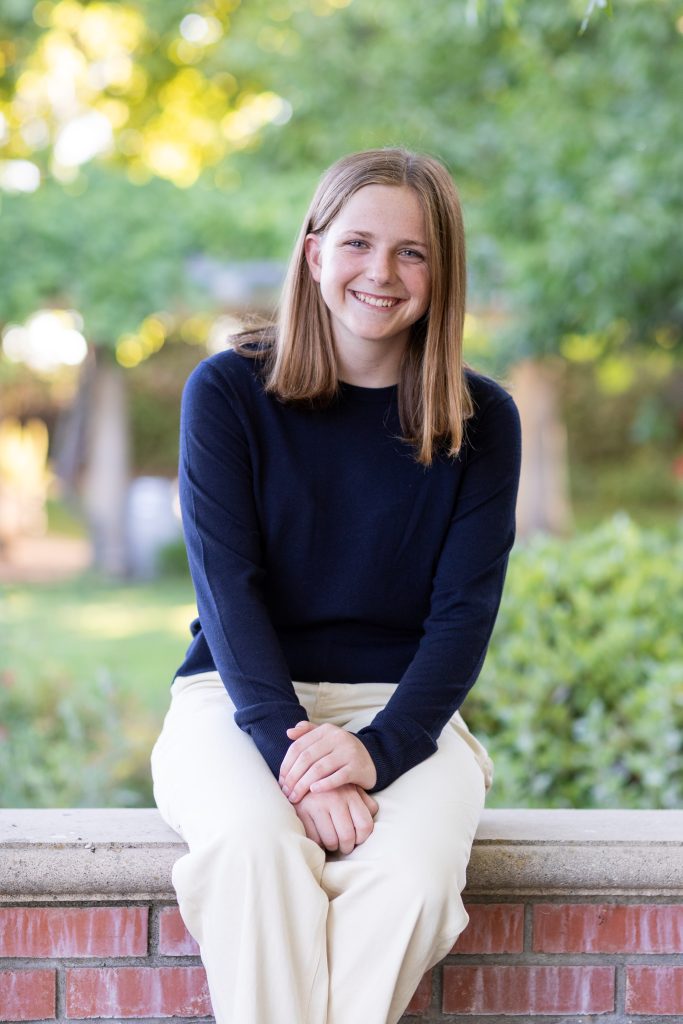This is a guest blog by Templeton High School senior Seraphina Jarboe, who interned at Cuesta College to further her interest in molecular science and computers.
It seems like every day we see stories in the news about artificial intelligence (AI). While some applications of this new tool have raised concerns, AI also has the potential to streamline scientific research. Eelgrass Lesion Image Segmentation Application (EeLISA) is a machine learning algorithm developed by Cornell University, and this AI tool may be key to efficiently detecting indications of wasting disease on eelgrass blades in Morro Bay.
The Importance of Eelgrass
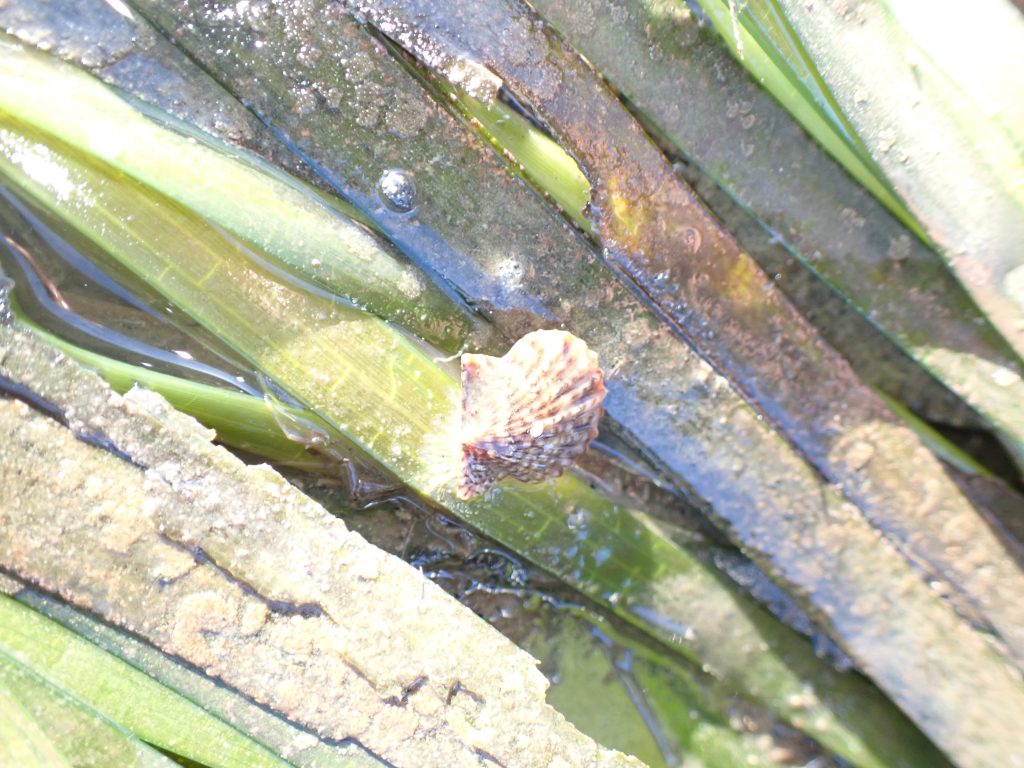
Eelgrass is crucial to the Morro Bay ecosystem. This flowering plant serves as a food source and shelter for a variety of organisms, prevents erosion, filters pollutants and excess nutrients, and serves as a powerful sink for greenhouse gases. You can learn more about this cornerstone species and how it’s doing in Morro Bay at this link.
In the past decade, eelgrass in Morro Bay underwent a drastic decrease and a rapid recovery. The decline may likely be attributed at least in part to Labyrinthula zosterae, an opportunistic fungus that causes wasting disease in eelgrass. The impacts of wasting disease are not a new phenomenon, being first described on the Atlantic coast of North America in the 1930s. I joined a Cuesta College research project working to better understand the factors that might trigger wasting disease in Morro Bay.
Meet EeLISA
Assessing disease in eelgrass samples can be time-consuming. Cuesta College researchers and students survey the estuary for wasting disease every summer, generating 350 images each year that would take several weeks to analyze manually.
To speed up this process and receive data in real time, we reached out to Brendan Rapazzo, a researcher in Dr. Carla Gomes’ group at Cornell University. They had developed an AI called EeLISA (Eelgrass Lesion Image Segmentation Application) to automate this process.
EeLISA takes an image of eelgrass blade fragments and assesses the color to detect the plant health.
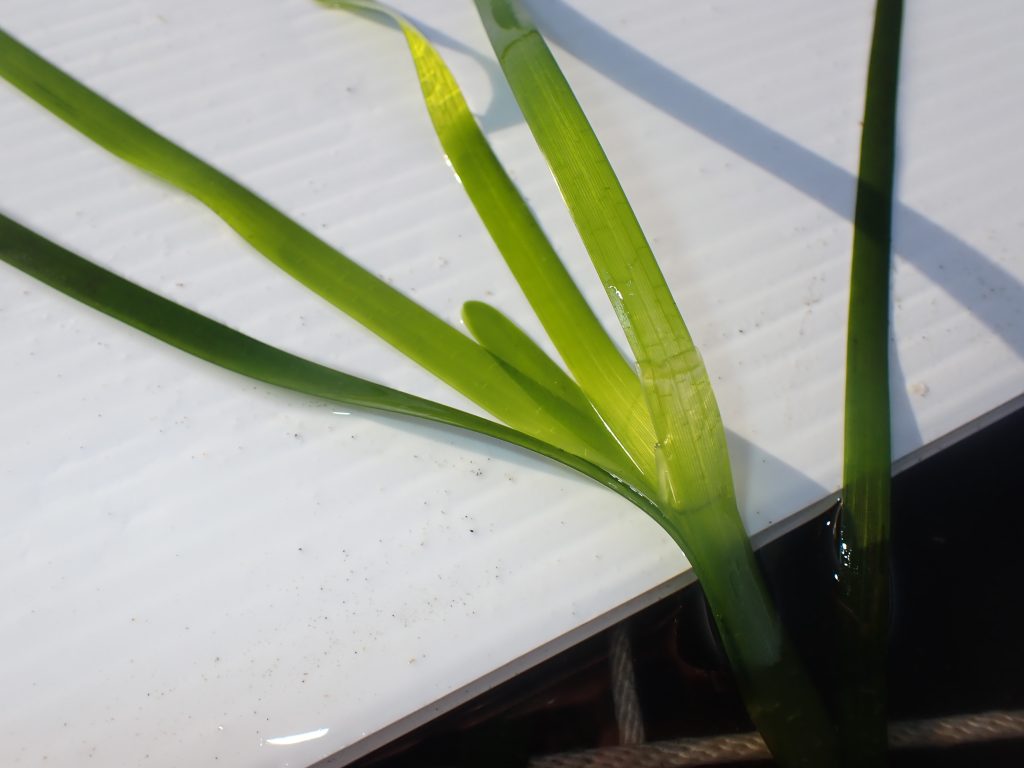
While blade colors within a certain range of greens are considered healthy, colors such as red, orange, yellow, and black can indicate tissue death (necrosis).

Customizing the AI for Morro Bay
EeLISA was created and optimized for eelgrass collected in other coastal areas in the US, so we weren’t surprised that it was less accurate for Morro Bay eelgrass. This could be due to how the images were taken and regional differences in eelgrass and wasting disease appearance.
Initially the AI was able to accurately analyze only 1,057 out of 1,395 eelgrass fragments when compared to a trained human eye, which is only 76% accuracy. We then added additional parameters to optimize the AI for our samples, including changing the color threshold to reduce the necrosis false positives and expanding the range of healthy colors to include lighter greens. After this customization, EeLISA’s accuracy rate rose to 97%.
Moving Forward…
We’ve taken thousands of images of eelgrass samples from past years, and earlier methods of analysis included manual processing which was time consuming and error-prone.
In contrast, EeLISA can accurately analyze thousands of images approximately 5,000 times faster than manual methods, reducing months of painstaking labor to mere minutes. EeLISA also has the potential to standardize this process between groups, making data more easily comparable between locations or researchers.
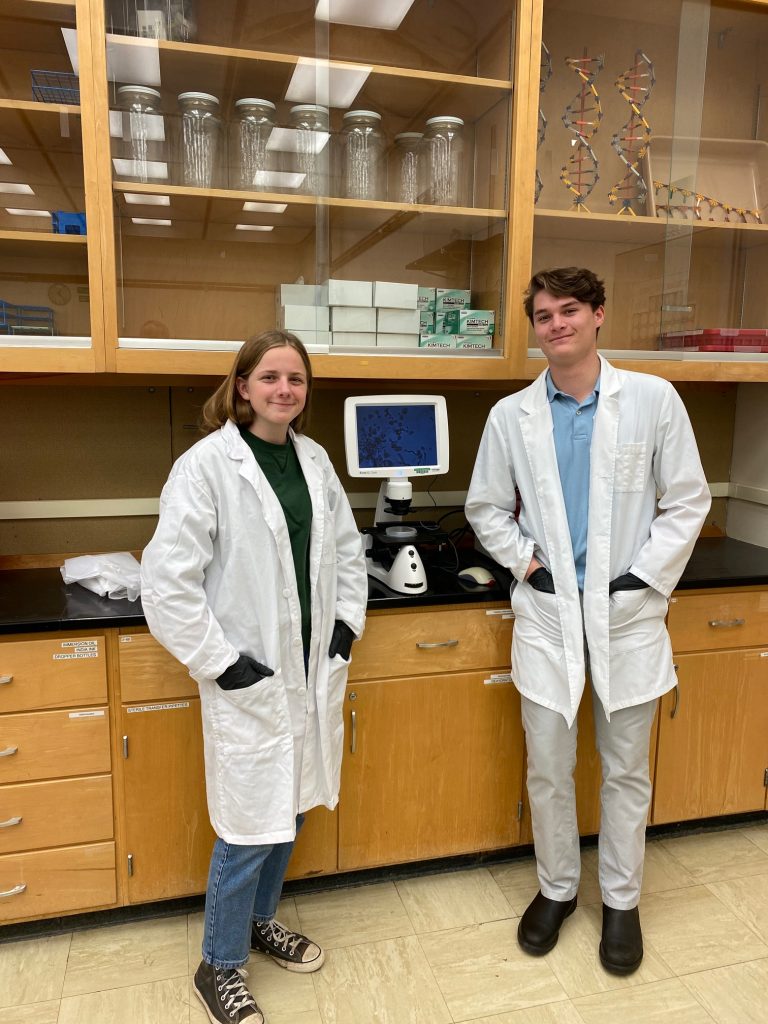
Author Bio:
Seraphina Jarboe, a graduating senior at Templeton High School, conducted a year-long research project at Cuesta College with Dr. Silvio Favoreto and laboratory assistant Aiden Arroyo. She especially enjoyed learning how scientific research works and how biology intersects with fields like computer science. She plans on going to university this fall to study bioengineering. Seraphina hopes to continue studying eelgrass and learn how to better protect this key species. In her free time, she loves swimming, spending time with friends and family, and drawing.
The Cuesta College team would like to acknowledge our funding support from the National Science Foundation, Award Number 2236402. We would also like to acknowledge the Cuesta College Foundation and the Estuary Program for their support in expanding research opportunities.
Help us protect and restore the Morro Bay estuary!
- Donate to the Estuary Program today and support our work in the field, the lab, and beyond.
The Estuary Program is a 501(c)3 nonprofit. We depend on funding from grants and generous donors to continue our work. - Support us by purchasing estuary-themed gear from ESTERO. This locally owned and operated company donates 20% of proceeds from its Estuary clothing line and 100% of Estuary decal proceeds to the Estuary Program. Thank you, ESTERO!
- Purchase items from the Estuary Program’s store on Zazzle. Zazzle prints and ships your items, and the Estuary Program receives 10% of the proceeds.
- Subscribe to our seasonal newsletter: Between the Tides!
- We want to hear from you! Please take a few minutes to fill out this short survey about what type of events you’d like to see from the Estuary Program. We appreciate your input!
